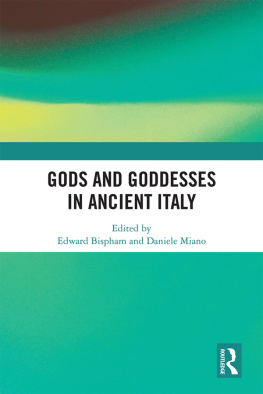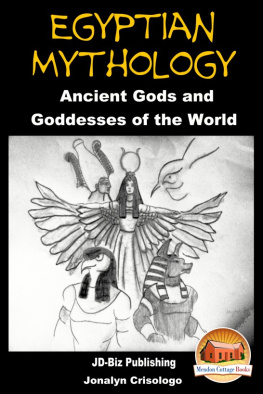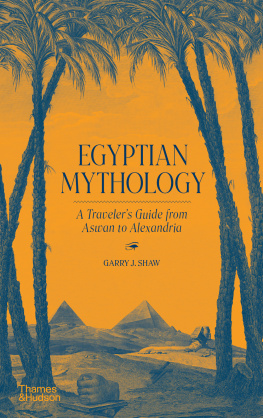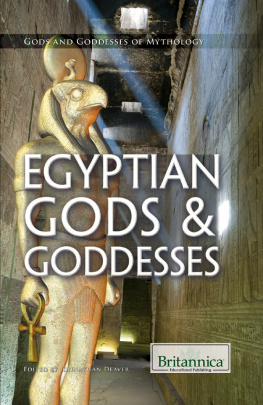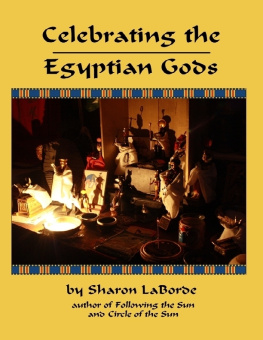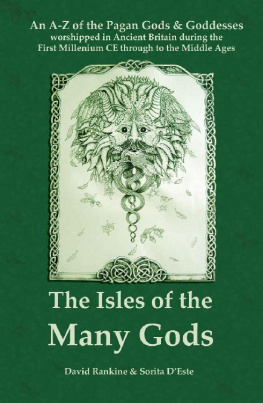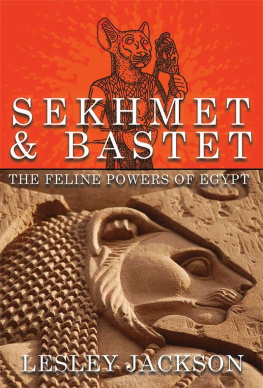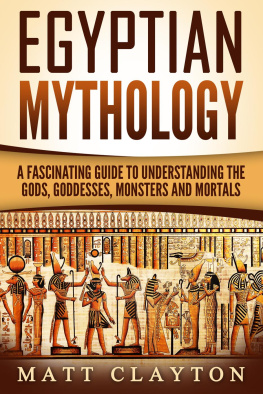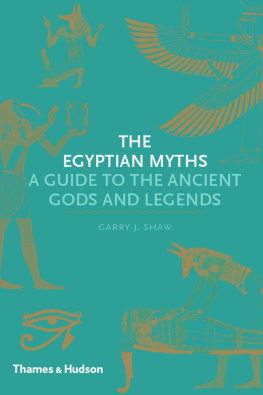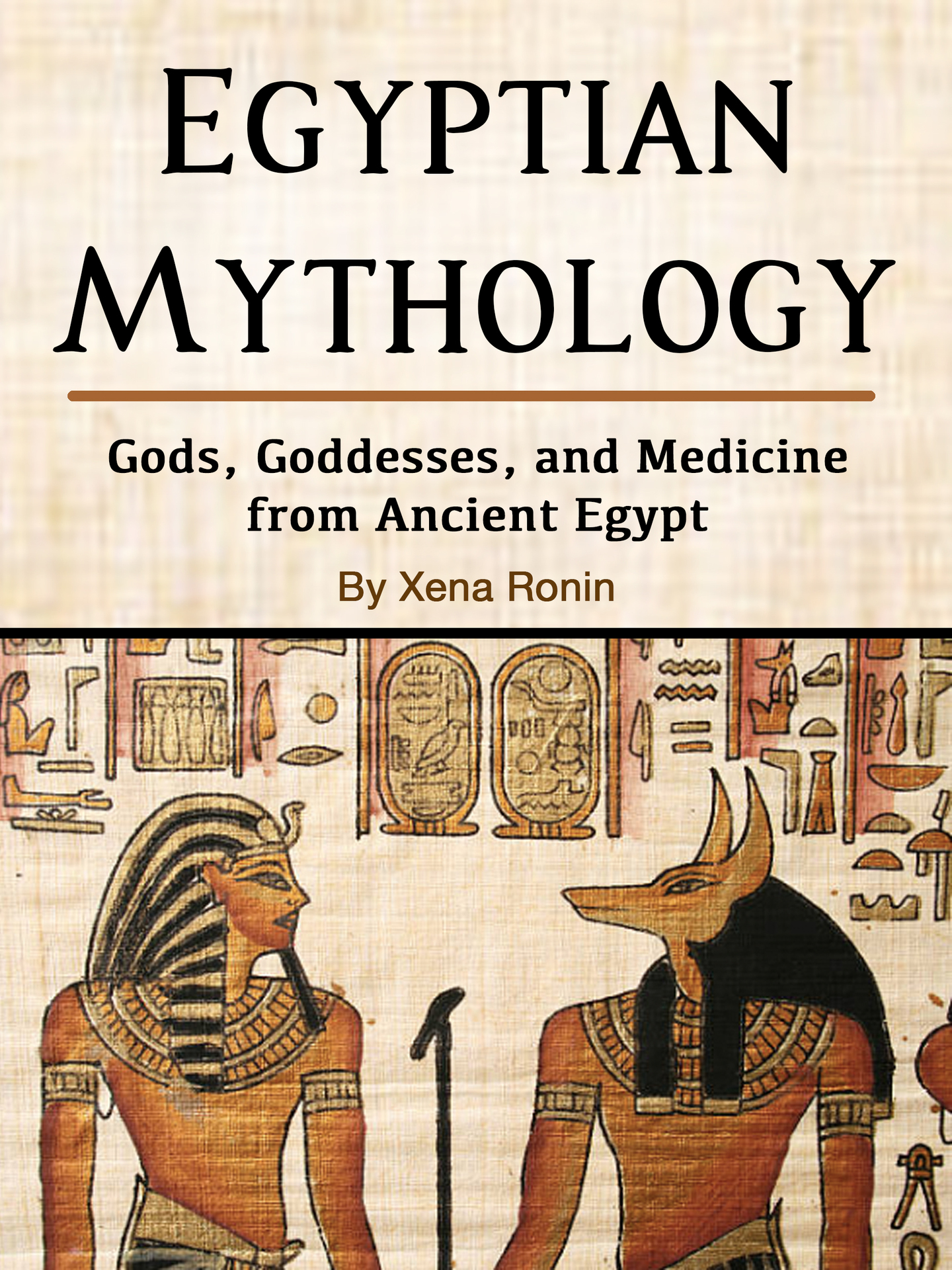Egyptian Mythology
Gods, Goddesses, and Medicine from Ancient Egypt
By Xena Ronin
Table of Contents
Chapter 1: The Complete List of Egyptian Gods and Goddesses
Lets get started. What did the people believe in in Egyptian society? Whom did they worship? How many gods and goddesses were there? And why were there so many? Well, the last question is simply answered by the fact that polytheism was pretty common in those days. Statues were often made from different materials to represent gods of elements and nature, life and death. Most religions had a deity or female deity of fruitfulness, the underworld, the water, the sea, the wind, the trees, the earth, and all kinds of crafts even had their gods, like, for example, hunting and fishing. Some were in the shapes of animals, and you may have seen some of those in Egyptian statues, like cats and dogs. Others looked a lot like human, or part human.
The male gods and female goddesses of Ancient ancient Egypt were definitely an important part of the people's everyday lives back then. It isn't unexpected then that there were over 2,000 deities in the Egyptian temple. Some of these godly beings' names are preferred: Isis, Osiris, Horus, Amun, Ra, Hathor, Bastet, Thoth, Anubis, and Ptah while many others less so. The more famous deities became state godly beings while others were associated with a particular region or, in many cases, a ritual or role. The female deity Qebhet, for example, is a little-known deity who offered cool water to the dead spirits as they awaited judgment in the hereafter, and Seshat was the female deity of written words and particular measurements eclipsed by Thoth, the better known deity of writing and customer of scribes.
Ancient Egyptian society grew out of a grasp of these godly beings and the essential role they played in the never-ending journey of every human being. Historian Margaret Bunson writes:
The huge number of gods and goddesses in ancient Egypt were the focal points of the country's cultic rites and personal religious practices. They also played a part in the great mortuary routines and in the Egyptian faith in posthumous immortal happiness.
The deities developed from an animistic faith system to one which was highly anthropomorphic and imbued with magic. Heka was the deity of magic and medication but was also the primitive force, pre-dating all the other gods, who enabled the act of creation and sustained both mortal and godly life. The most vital value of the Egyptian society was ma'at - harmony and stability - represented by the female deity of the same name and her white ostrich feather, and it was Heka who empowered Ma'at just as he did all of the other deities. Heka was the manifestation of heka (magic) which should be comprehended to be natural laws which today would be considered godlike but, to the Egyptians, were simply how the world and the universe operated. The deities provided people with all good gifts, but it was Heka who allowed them to do that.
These deities all had names, individual characters and traits, wore various types of clothes, held different things as holy, commanded their own domains of influence, and reacted in highly individualistic ways to events. Each godly being had their own area of proficiency but were generally connected with some spheres of human life.
Hathor, as an example, was a female deity of music, dancing, and drunkenness but was also comprehended as an old Mother Goddess, also connected with the Milky Way as a godly reflection of the Nile River, and, in her earlier incarnation as Sekhmet, as a destroyer. The female deity Neith was actually a war female deity who ended up being the embodiment of the Mother Goddess, a nurturing figure, to whom the gods would turn to settle their conflicts. Many gods and goddesses, like, for example, Set or Serket, transformed through time to handle other roles and responsibilities.
These modifications were in some cases remarkable, as in case of Set who went from a hero protector-deity to a villain and the world's first murderer. Serket was likely an early Mother Goddess, and her later role as protector against poisonous beings (particularly scorpions) and guardian of women and children shows those traits. Bunson writes:
The Egyptians had no issue with a multitude of gods and they seldom shelved old deities in favor of new ones. Attributes and roles of numerous deities were syncretized to reconcile differing religions, customs, or ideal visions. For political and spiritual reasons, as an example, the Theban deity Amun, who was considered the most powerful godly being in the New Kingdom, was joined with Ra, a sun deity whose cult dated to the starter days of Egypt. Worship of the gods of ancient Egypt progressed gradually as big cults developed on a regional and after that on a nationwide scale.
The following list of the gods and goddesses of ancient Egypt is derived from numerous works on the subject which follow below in the bibliography. Every attempt has been made to produce an extensive listing but small regional deities have been omitted if their role appears uncertain or they were transformed into major gods. When a major deity developed from an earlier minor deity, it isnted.
Included here, also, are principles, like, for example, The Field of Reeds or Lily Lake, which were areas in the hereafter related to the gods. The meanings of the god's traits and the roles they played are synthesized for clarity but it should be noted that not every deity noted was comprehended in the exact same way throughout Egypt's long history. Osiris, for example, was likelya fruitfulness deity in the Predynastic Period of ancient Egypt (c. 6000-3150 BCE) but was already comprehended as the First King by the Early Dynastic Period (c. 3150-2613 BCE) and was the most preferred deity in ancient Egypt during the time of the New Kingdom (1570-1069 BCE) at the exact same time that Amun was considered King of the Gods. While these developments are sometimes noted right below, the gods are generally defined in the roles they were best known for at the peak of their appeal.
A.
A'ah - An early moon deity who evolved into Iah (also referred to as Yah) and, ultimately, Khonsu.
Aken - Custodian of the boat which ferried living spirits right across Lily Lake to the Field of Reeds in the hereafter. He slept till he was needed by Hraf-Hef, the surly Divine Ferryman. His name only appears in the Book of the Dead.
Aker - The idolized horizon, defender of the eastern and western horizons of the hereafter. He safeguarded the sun barge of Ra as it entered and left the underworld at dusk and dawn.
Am-Heh - A deity in the underworld, "devourer of millions" and "eater of eternity" who lived in a lake of fire.
Amenet (Amentet) - A female deity who welcomed the dead to the hereafter with food and drink. Known as "She of the West", Amenet was the consort of the Divine Ferryman. She resided in a tree near the gateways of the underworld. Daughter of Hathor and Horus.
Ammit (Ammut) - "Devourer of Souls", a female deity with the head of a crocodile, upper body of a leopard, and hindquarters of a hippo. She sat below the scales of justice in the Hall of Truth in the hereafter and feasted on the hearts of those spirits which were not justified by Osiris.
Amun (Amun-Ra) - God of the sun and air. One of the most powerful and famous gods of ancient Egypt, client of the city of Thebes, where he was worshipped as part of the Theban Triad of Amun, Mut, and Khonsu. Supreme king of the gods in some periods, while actually a minor fruitfulness god. By the time of the New Kingdom he was considered the most effective deity in ancient Egypt and his worship verged on monotheism. Other gods were even considered simple elements of Amun at this time. His priesthood was the most effective in ancient Egypt and the position of God's Partner of Amun, given to royal women, nearly on par with that of the pharaoh.


